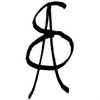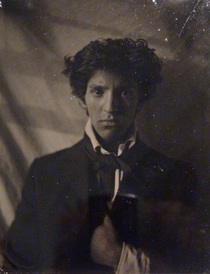|
My brother's friend recently taught me about vinyl records. I was completely fascinated because I have never heard a vinyl record before. As he was describing his love for the sound of original vinyl records, I noticed striking similarities to tintype photography and academic palettes. I only learned about the basics of vinyl records, but I know that the rather simple tools involved produced a better sound. We listened to Nirvana, Elvis and a few other records, and I have to say that it sounded like they were in the room with us; it was amazing. Learning about these records, I got the same feeling as when my friend, Charlie Harrigan introduced me to tintype photographs. I had always thought that people in old photographs somehow looked differently than we do today. That is completely explainable through a scientific reason. Red pigment, as seen in red cheeks, translates to a darker tone when you use this photographic method. The result is that I looked much swarthier than I do in real life. (If you photograph a red apple, it will come out really dark.) The same connection can be made to vinyl records. The sound is warmer and more life-like because of the equipment used to produce it. The speakers melt away and the sound comes forward. There's an entire science behind this, which my brother's friend knows very well. This also made me think of oil painting palettes. I still firmly believe that practice is more important than any particular tool, but the subtle beauty of a 19th century painting doesn't only come from skill level alone. The tools used by 19th century painters, such as: lead white, early photography, and oil grounds, all affect the outcome of the painting. The simplicity of these palettes is just like the simplicity of a vinyl record. A basic 19th century palette doesn't include many of the vibrant colors available to artists today. They had early access to cadmiums, cobalts and bright colors, but they also used less chromatic pigments like silver white (half lead and half zinc) van dyke brown and genuine rose madder. The academic painters didn't have titanium white or dry and chalky acrylic grounds. By using colors such as lead white instead of titanium white, 19th century painters had to rely more on mid-tones and darks instead of bright and chalky colors. The resulting subtlety cannot be produced any other way. Many people think that "If I use these colors, then I can paint like the old masters." This isn't what I'm saying. Studying particular colors can only help after years of practice. Basic tools positively affect outcomes because it forces creativity and that's the beauty of all of these things. What do Vinyl records, Tintypes and Academic Palettes have in common?
0 Comments
Your comment will be posted after it is approved.
Leave a Reply. |
Archives
July 2024
Categories
All
|


 RSS Feed
RSS Feed